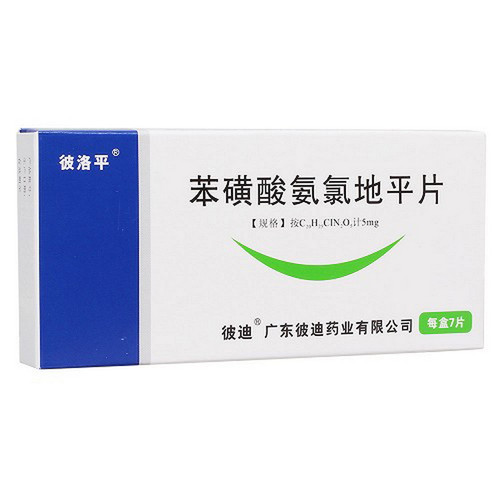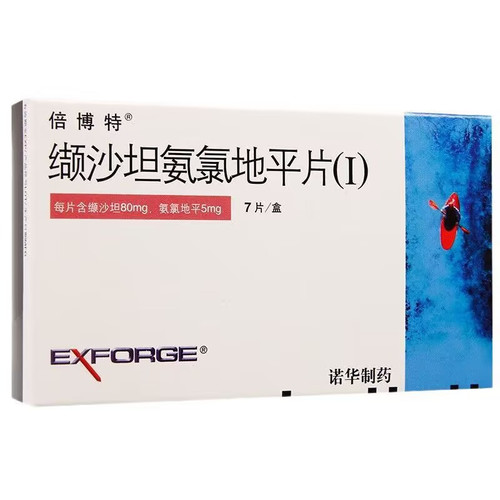Product Overview
[Drug Name]
Generic Name: Amlodipine Besylate Tablets
Trade Name: Landi
English Name: Amlodipine Besylate Tablets
Chinese Pinyin: Benhuɑnɡsuɑn Anlüdipinɡ Pian
[Ingredients]
The chemical name of this product is: 3-ethyl-5-methyl-2-(2-aminoethoxymethyl)-4-(2-chlorophenyl)-1,4-dihydro-6-methyl-3,5-pyridinedicarboxylate benzenesulfonate. Molecular formula: C20H25ClN2O5C6H6O3S, molecular weight: 567.1.
[Properties]
This product is a white tablet.
[Indications]
Hypertension and angina pectoris.
[Dosage and Administration]
The usual starting oral dose is 5 mg once daily, with a maximum of 10 mg once daily. For thin patients, those with frail constitutions, the elderly, or those with impaired liver function, the initial dose should be 2.5 mg once daily. This dose should also be used for patients taking other antihypertensive medications. The dosage should be adjusted based on individual needs, and the adjustment period should be at least 7-14 days to allow the physician to fully assess the patient's response to the dose. However, more rapid adjustment can be performed if clinically warranted. The recommended dose for treating angina pectoris is 5-10 mg; a reduced dose is required for elderly patients or those with impaired liver function.
[Adverse Reactions]
This drug is well tolerated. Common side effects include headache, edema, fatigue, insomnia, nausea, abdominal pain, flushing, palpitations, and dizziness. Less common side effects include itching, rash, dyspnea, weakness, muscle cramps, and indigestion. Similar to other calcium channel blockers, myocardial infarction and chest pain have been reported as adverse reactions, and these reactions cannot be clearly distinguished from the patient's underlying medical condition. No abnormal laboratory parameters have been found to be associated with this drug.
[Contraindications]
This drug is contraindicated in patients allergic to dihydropyridine calcium channel blockers.
[Precautions]
1. Use in Patients with Impaired Liver Function: The half-life of this drug is prolonged in patients with impaired liver function, but a recommended dose has not yet been established. Therefore, caution should be exercised when using this drug in such situations. 2. Use in Elderly Patients: Initially, a smaller dose should be used and then gradually increased. 3. Use during Pregnancy and Lactation: The safety of this drug during pregnancy and lactation has not been established.
[Use in Special Populations]
Precautions for Children: Safety and efficacy in children have not been established.
Precautions for Pregnancy and Lactation: Research data are lacking for its use in pregnant women, but based on animal studies, this drug should only be used in pregnant women when absolutely necessary. It is unknown whether this drug is excreted in breast milk; lactating women taking this drug should discontinue breastfeeding.
Precautions for Elderly Patients: Clinical studies have not demonstrated that elderly patients respond differently to this drug than younger patients. However, given that elderly patients often have impaired liver, kidney, and heart function, as well as other medical conditions and medications, the lower end of the initial dose range is generally used. Elderly individuals have reduced clearance of this drug, with an increase in the area under the drug curve (AUC) of approximately 40% to 60%, necessitating a lower initial dose.
[Drug Interactions]
This drug is safe to use with the following medications: thiazide diuretics, beta-blockers, angiotensin-converting enzyme inhibitors, long-acting nitrates, sublingual nitroglycerin, nonsteroidal anti-inflammatory drugs, antibiotics, and oral hypoglycemics. In healthy volunteers, coadministration of this drug with digoxin did not alter digoxin plasma concentrations or renal clearance, and coadministration of this drug with cimetidine did not alter its pharmacokinetics. In vitro data indicate that this drug has no effect on the plasma protein binding of digoxin, phenytoin, warfarin, or indomethacin. In healthy male volunteers, coadministration of this drug with warfarin did not affect the changes in prothrombin time induced by warfarin.
[Pharmacological Action]
This product is a calcium influx blocker (also known as a calcium channel blocker or calcium ion antagonist), which blocks the entry of extracellular calcium ions into myocardial and vascular smooth muscle cells through calcium ion channels (slow channels) in the cell membrane. This product directly relaxes vascular smooth muscle, dilates peripheral arterioles, and reduces peripheral resistance (afterload), particularly dilating coronary arteries. It can relieve coronary artery spasm, and has antihypertensive and angina-relieving effects.
[Storage] Store in a dark, sealed container.
[Specification] 5mg x 7 tablets
[Packaging Size] Box
[Expiry Date] 24 months.
[Approval Number] National Medicine Standard H20020468
[Manufacturer] Company Name: Yangtze River Pharmaceutical Group Shanghai Haini Pharmaceutical Co., Ltd.









